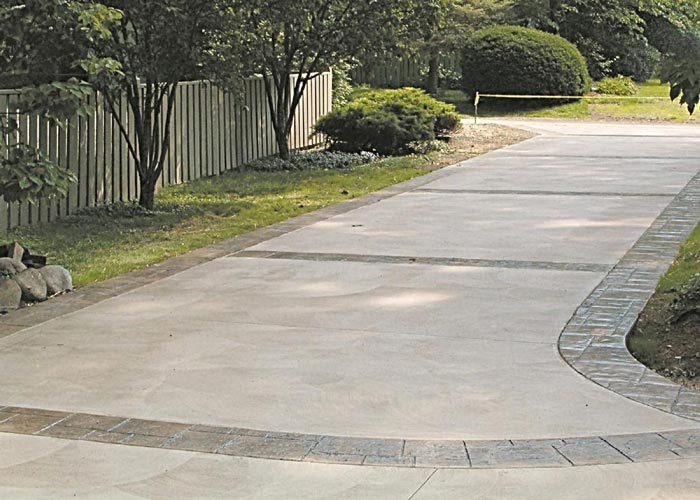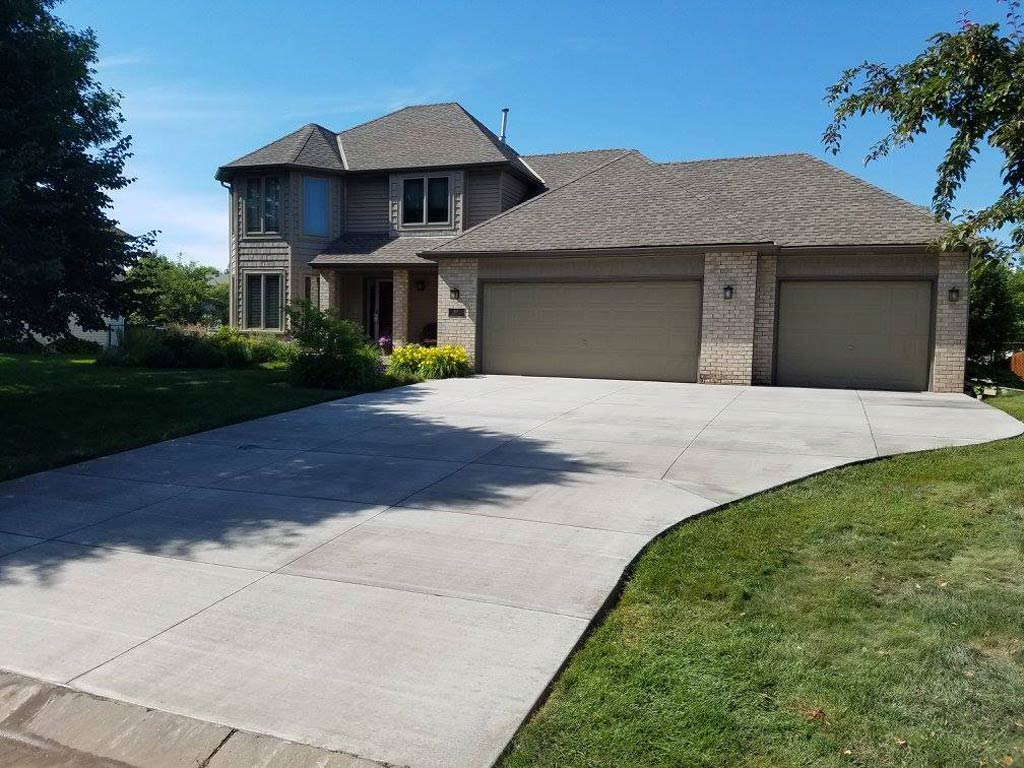Elevate Your Projects with Legendary Concrete Brentwood: Unrivaled High Quality Ensured
The Environmentally Friendly Selection: Concrete Sidewalks for Your Area
Concrete pathways are an ubiquitous attribute in a lot of neighborhoods, yet their effect on the environment is typically neglected. However, choosing concrete for your area walkways can make a considerable difference in regards to sustainability and eco-friendliness. The advantages of selecting concrete exceed mere appearances and capability. By thinking about the environmental advantages and long-term results on the area, the selection of products for sidewalks becomes a vital choice. Let's explore why concrete sidewalks might be the green selection your area needs.
Advantages of Concrete Sidewalks
When considering the installation of walkways in an area, the benefits of picking concrete over various other materials are considerable and various. Concrete walkways provide longevity, holding up against hefty foot web traffic, weather variations, and ecological elements much better than alternate products like asphalt or gravel. This longevity converts to cost-effectiveness over time, as concrete sidewalks require much less constant repair work and maintenance. Additionally, concrete is a flexible material that can be easily personalized to enhance the visual of any type of community with different finishes, shades, and patterns.

Resilience and Longevity
Just how can concrete pathways outmatch other materials in terms of sturdiness and long life? Concrete pathways are renowned for their remarkable longevity and longevity compared to alternate materials like asphalt or pavers. The integral strength of concrete makes it highly resistant to breaking, moving, and general deterioration brought on by foot web traffic, weather condition variations, and various other ecological variables. Unlike asphalt, which can soften in heats and crack in freezing conditions, concrete maintains its architectural stability, needing minimal upkeep with time.
Concrete sidewalks also have a longer life-span than pavers, which are vulnerable to uneven settling, weed development between joints, and specific paver activity. The solid, constant surface area of concrete minimizes stumbling threats and ensures a smooth strolling path for pedestrians. Additionally, concrete's sturdiness minimizes the requirement for constant repair services or substitutes, making it a lasting and economical choice for neighborhood walkways. By spending in concrete walkways, areas can appreciate a durable and reputable facilities that boosts the total aesthetic appeal and performance of the location.
Low Maintenance Demands
Concrete walkways stick out for their minimal upkeep needs as a result of their sturdy nature and long-lasting performance. Unlike alternative products that may require constant repairs or replacements, concrete walkways use an economical service that requires little upkeep with time. One of the vital advantages of concrete pathways is their resistance to weathering and erosion. This implies they can stand up to severe weather condition problems, hefty foot website traffic, and various other ecological elements without weakening quickly.
Routine maintenance for concrete pathways generally includes basic jobs such as normal cleansing to remove debris and occasional sealing to secure the surface area. In contrast to products like asphalt or pavers that may move, split, or degrade more quickly, concrete pathways maintain their structural stability with marginal intervention. In addition, any kind of repair services that might be required are generally local and can be resolved swiftly, decreasing both the time and expense connected with maintenance.

Ecological Advantages
With a concentrate on sustainability and eco-friendliness, concrete walkways supply remarkable ecological advantages that contribute to a greener community framework. Concrete is a material known for its sturdiness and long life, reducing the need for frequent replacements. This longevity look at these guys lessens the ecological impact connected with the manufacturing and transport of brand-new materials for walkway construction. Furthermore, concrete walkways have a high solar reflectance index, indicating they show a considerable amount of sunlight as opposed to soaking up and maintaining warm. This high quality aids reduce the metropolitan warmth island result, minimizing energy consumption for cooling down structures and boosting total convenience in city areas.
Furthermore, concrete is a permeable material that allows water to infiltrate right into the ground, decreasing stormwater runoff and assisting in groundwater recharge. This aids prevent disintegration, lessen flooding, and preserve the natural equilibrium of water systems in the neighborhood. By picking concrete pathways, communities can make a lasting choice that positively impacts the environment and improves the lifestyle for citizens.
Enhancing Neighborhood Sustainability
By focusing on sustainable framework options, neighborhoods can cultivate an unified equilibrium between environmental awareness and neighborhood growth. Enhancing area sustainability includes a diverse approach that exceeds just the ecological benefits of concrete sidewalks. Carrying out eco-friendly rooms, promoting energy-efficient practices, and cultivating a sense of community engagement are important components of creating a sustainable neighborhood.
One means to enhance neighborhood sustainability is with the assimilation of permeable concrete pathways. These sidewalks permit rain to permeate into the ground, lowering stormwater drainage and minimizing the pressure on municipal water drainage systems. Concrete Contractor. By including absorptive sidewalks, areas can enhance water quality, reduce flooding dangers, and enhance total environmental strength
Moreover, promoting different transportation approaches such as walking and biking can dramatically decrease carbon emissions and advertise a healthier way of life among homeowners. Producing secure pedestrian pathways, bike lanes, and designated greenways can motivate homeowners to rely less on vehicles, read additionally adding to the community's sustainability objectives.
Conclusion
To conclude, concrete walkways use various advantages for communities, consisting of resilience, reduced upkeep requirements, and environmental benefits. By picking concrete walkways, areas can enhance their sustainability and contribute to an extra eco-friendly setting. It is clear that concrete pathways are the excellent option for communities wanting to improve their framework in a durable and ecologically pleasant fashion.
When thinking about the installment of pathways in a community, the benefits of choosing concrete over other products are various and substantial. In addition, concrete's toughness reduces the requirement for frequent repair services or substitutes, making it a affordable and lasting choice Website for area pathways (Concrete Contractor).With an emphasis on sustainability and eco-friendliness, concrete sidewalks provide remarkable environmental benefits that contribute to a greener area facilities. Enhancing community sustainability entails a diverse strategy that goes past just the environmental benefits of concrete walkways.In verdict, concrete sidewalks use various advantages for communities, including longevity, low upkeep requirements, and environmental benefits